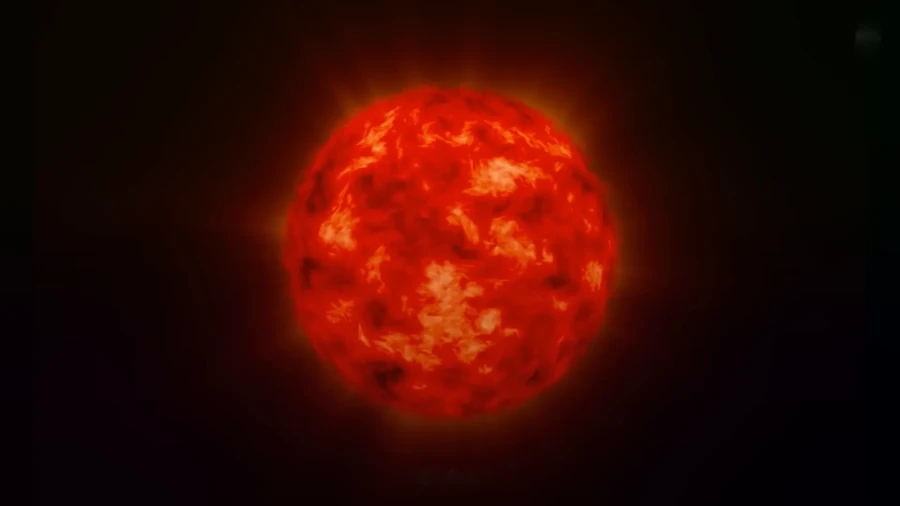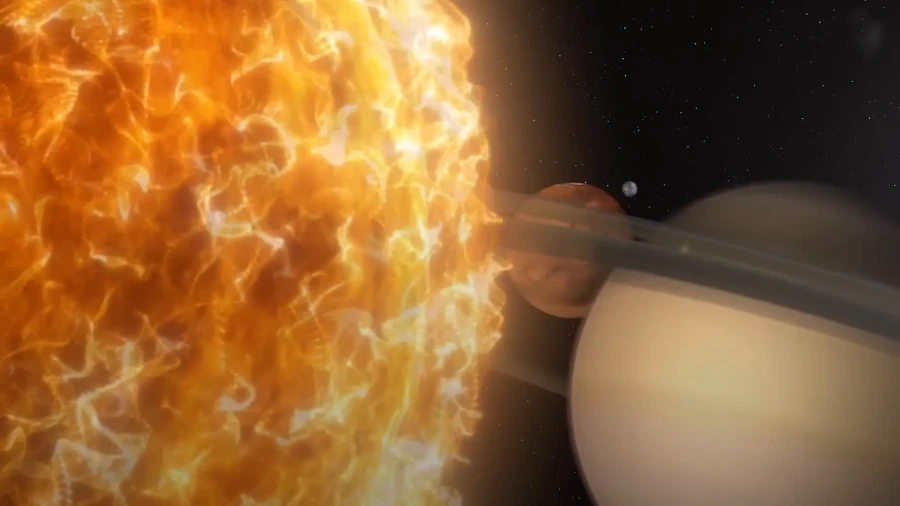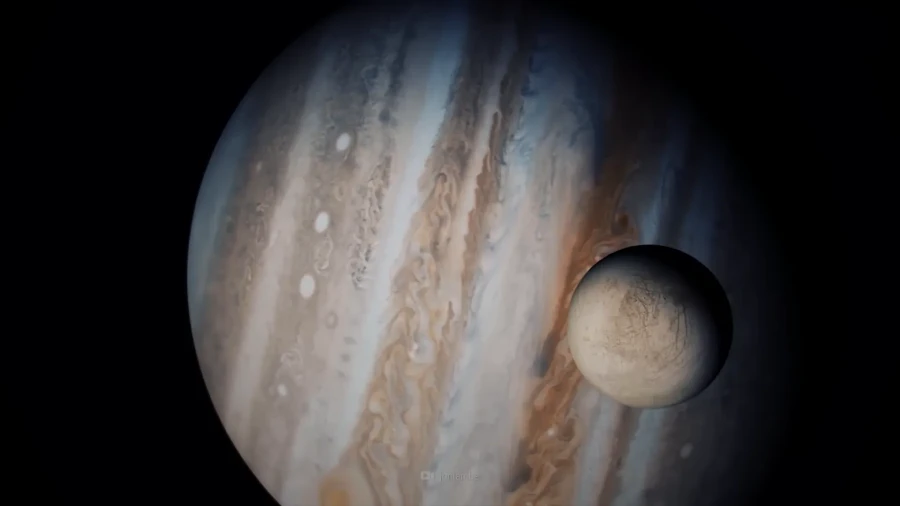Jupiter, the giant of our Solar System, has long fascinated astronomers and stargazers alike. With more than twice the combined mass of all other planets, it’s a colossal world made mostly of hydrogen and helium, the very elements that fuel stars. Yet, despite its size and composition, Jupiter remains a planet, not a star. But what if, during its formation, Jupiter had gained just a little more mass and ignited to become a star? How would that have transformed our Solar System? Would life on Earth be affected? And could we see this new star shining in our night sky? Let’s explore this cosmic “what if” and uncover the possibilities.

Jupiter: A Giant on the Brink of Stardom
Jupiter’s sheer size is staggering—it holds more than twice the mass of all the other planets combined. Unlike Earth or Mars, Jupiter doesn’t have a solid surface; it’s a gas giant composed predominantly of hydrogen and helium, the same elements that make up our Sun. Despite these similarities, Jupiter lacks the critical mass needed to trigger nuclear fusion in its core, the process that powers stars. Without fusion, Jupiter cannot produce its own light and heat, which is why it remains a planet rather than a star.
To become a star, Jupiter would need to be about 80 times more massive than it currently is. Imagine if we could gather seventy-nine more Jupiters and merge them all—this combined mass would be sufficient to ignite fusion and create a second star in our Solar System. But what kind of star would it be?
The Birth of a Red Dwarf: Jupiter’s Star Potential
If Jupiter were to gain enough mass to ignite fusion, it wouldn’t become a star like our Sun. Instead, it would transform into a red dwarf—a small, cool star that burns hydrogen at a much lower rate than the Sun. Red dwarfs are the most common type of star in the Milky Way, but they emit only a fraction of the light and heat of stars like our Sun.

Specifically, a Jupiter-sized red dwarf would emit about 0.3% of the Sun’s luminosity. Given that Jupiter orbits at roughly four times the Earth-Sun distance, Earth would receive very little additional heat or light from this new star. Life on our planet would remain largely unaffected in terms of temperature and energy input.

Visually, this new star would appear red and shine a bit brighter than the full Moon when observed from Earth. It would be an unmistakable addition to our night sky, providing a spectacular celestial sight without drastically changing our environment.
Gravitational Effects on the Solar System
One might expect that having a second star in the Solar System would wreak havoc on the orbits of the planets. However, the reality would be more subtle. The gravitational pull of a red dwarf Jupiter would slightly shift the orbits of the other planets, but not enough to cause chaos such as planetary collisions or planets being ejected into space.

The primary concern would be the asteroid belt. Jupiter’s new gravitational influence could perturb the orbits of asteroids, potentially sending more space rocks hurtling toward Earth. This would increase the risk of asteroid impacts, making it essential for humanity to develop enhanced detection and deflection technologies to protect our planet.
A Wild Scenario: Jupiter as a Sun-Like Star
Things get far more dramatic if we imagine Jupiter becoming a star with a mass comparable to the Sun—about a thousand times more massive than it is now. In this scenario, the gravitational dynamics of the Solar System would be thrown into disarray. Asteroids would frequently collide with planets, and planetary orbits would shift unpredictably.

Earth’s fate in such a gravitational maelstrom is uncertain. It could be pulled dangerously close to Jupiter’s star and scorched, or it might be flung out into the cold void of space, losing its place in the habitable zone. Either outcome would be catastrophic for life as we know it.
Why Jupiter Will Always Be a Planet
In reality, Jupiter is destined to remain a planet. Its mass is simply insufficient to spark the fusion process that defines stars. And this cosmic limitation is a good thing for us. The stable environment created by having a single star at the center of our Solar System has allowed life on Earth to flourish.
Still, the mysteries of Jupiter continue to captivate scientists. Future missions may one day send spacecraft closer to or even inside the gas giant to unlock its secrets and deepen our understanding of this fascinating world.

Frequently Asked Questions (FAQs)
Could Jupiter ever become a star naturally?
No. Jupiter lacks the necessary mass to initiate nuclear fusion. It would need to be about 80 times more massive to become a red dwarf star.
Would a Jupiter star affect life on Earth?
Not significantly. A red dwarf Jupiter would emit much less light and heat than the Sun, and Earth’s climate would remain largely unchanged.
Would the Solar System’s planets be at risk if Jupiter became a star?
Only slightly. The orbits of planets might shift a bit, but not enough to cause collisions or ejections. The main risk would be an increase in asteroid impacts due to gravitational disturbances.
What if Jupiter became as massive as the Sun?
The Solar System would become chaotic, with planets changing orbits unpredictably. Earth could be scorched or ejected into space, making it inhospitable for life.
Why is Jupiter not a star despite its size?
Because it does not have enough mass to trigger the fusion of hydrogen in its core, which is essential for a star to shine.
